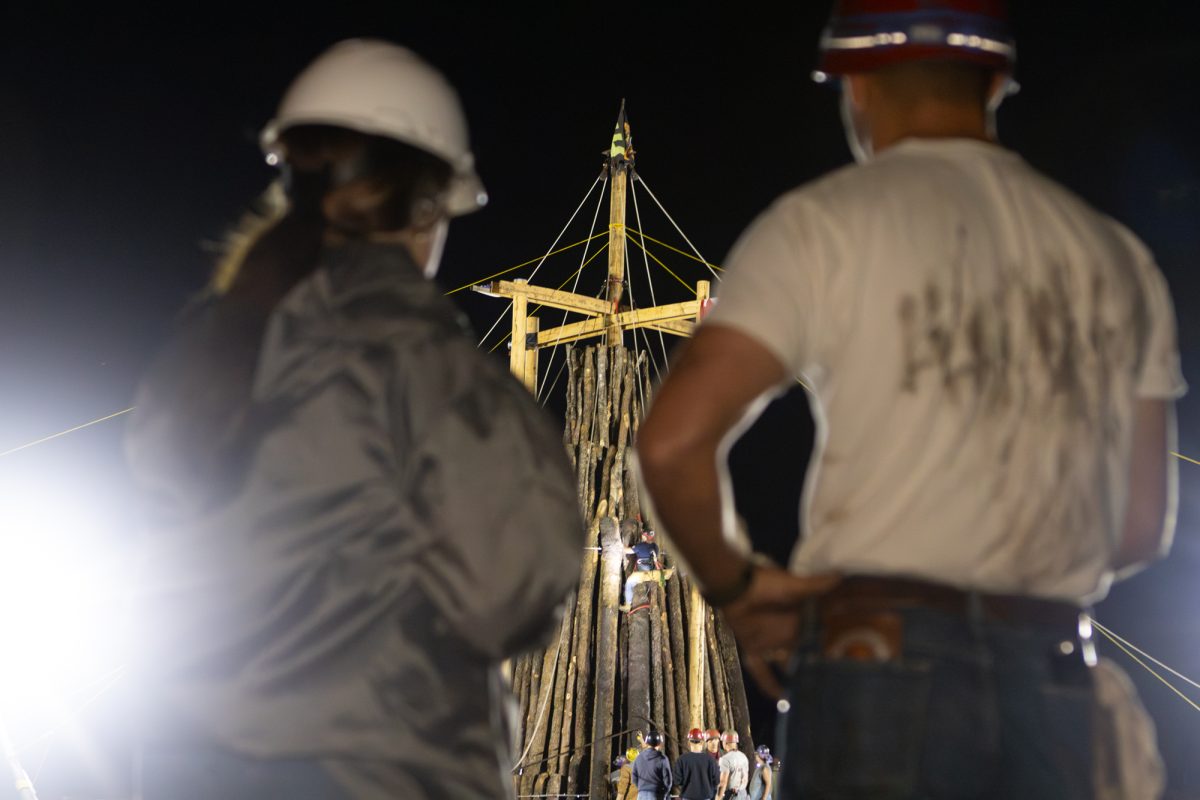As I walked along Omaha beach — waves gently crashing and nothing in the sky but the warm sun — I found it hard to fathom that I was on the very soil where 70 years ago this month, Allied troops bravely fought to bring an end to the Axis power’s military regimes across Europe.
Saturday, my study abroad group and I traveled to Normandy, a region located in the North of France, where the largest seaborne invasion in history occurred during World War II. We visited several sites including Omaha Beach, the Normandy American Cemetery and Memorial, as well as Pointe du Hoc, where former Texas A&M President James Earl Rudder served as commander. This trip to Normandy will forever be engrained in my mind as one of the most powerful and intriguing visits of my life as an American, as well as an Aggie.
Dotted with row upon row of white gravestones, a bluff overlooking Omaha beach is the place of rest for 9,387 American soldiers who gave their lives during the Normandy Invasion. The space is calm and tranquil, with the vast number of white crosses and Stars of David serving as small testimonies to each man who died for the sake of humanity.
Elise Hargrove, a senior double major in international studies and English literature, said there was a stark contrast between the beauty of the present day cemetery and the harsh violence that the American soldiers had to endure.
“I think it’s crazy how beautiful the place was, and how we are seeing it totally differently than how it was on D-Day, you know it was terrifying and violent,” Hargrove said. “And then you go and you see this beautiful cemetery and I feel that it was kind of a memorial to the beauty of the life that was lost there.”
Travis Bertrand, a senior international studies major, who also came on the trip with the group, said he was in awe of the cemetery.
“It was kind of overwhelming, just looking at all the crosses while I was standing in the middle of all of it,” Bertrand said. “And picturing all the people who died, it made a huge difference seeing it, rather than just hearing it or reading it in a textbook.”
We also visited Pointe du Hoc, where Rudder led the 2nd Ranger Battalion at the Battle of Pointe du Hoc. The troops stormed the beach, scaled 100-foot cliffs under enemy fire, and successfully gained a beachhead for the Allied forces.
The area still echoed tales of the battle. Green grass and vegetation grows over enormous bomb craters. Barbed wire ever so slightly obstructs the view of the beach. Several German barricades remain as haunting remnants of the war.
At the tip of the point, lies the Pointe du Hoc Ranger Monument, honoring the Rangers mentioning Rudder as commander of these forces.
Hargrove said that having an Aggie tie to such a key and important military victory in WWII was a very unique honor to have.
“To know that someone close to our own home actually liberated France and actually helped defeat the Axis powers in the most infamous war in history is really cool, something to be proud of,” Hargrove said.
Aggie Abroad: Experiencing Normandy
June 15, 2014

photo by Victoria Rivas
Point du Hoc overlooks the coast of Normandy and was once a location for German bunkers.
0
Donate to The Battalion
Your donation will support the student journalists of Texas A&M University - College Station. Your contribution will allow us to purchase equipment and cover our annual website hosting costs.








